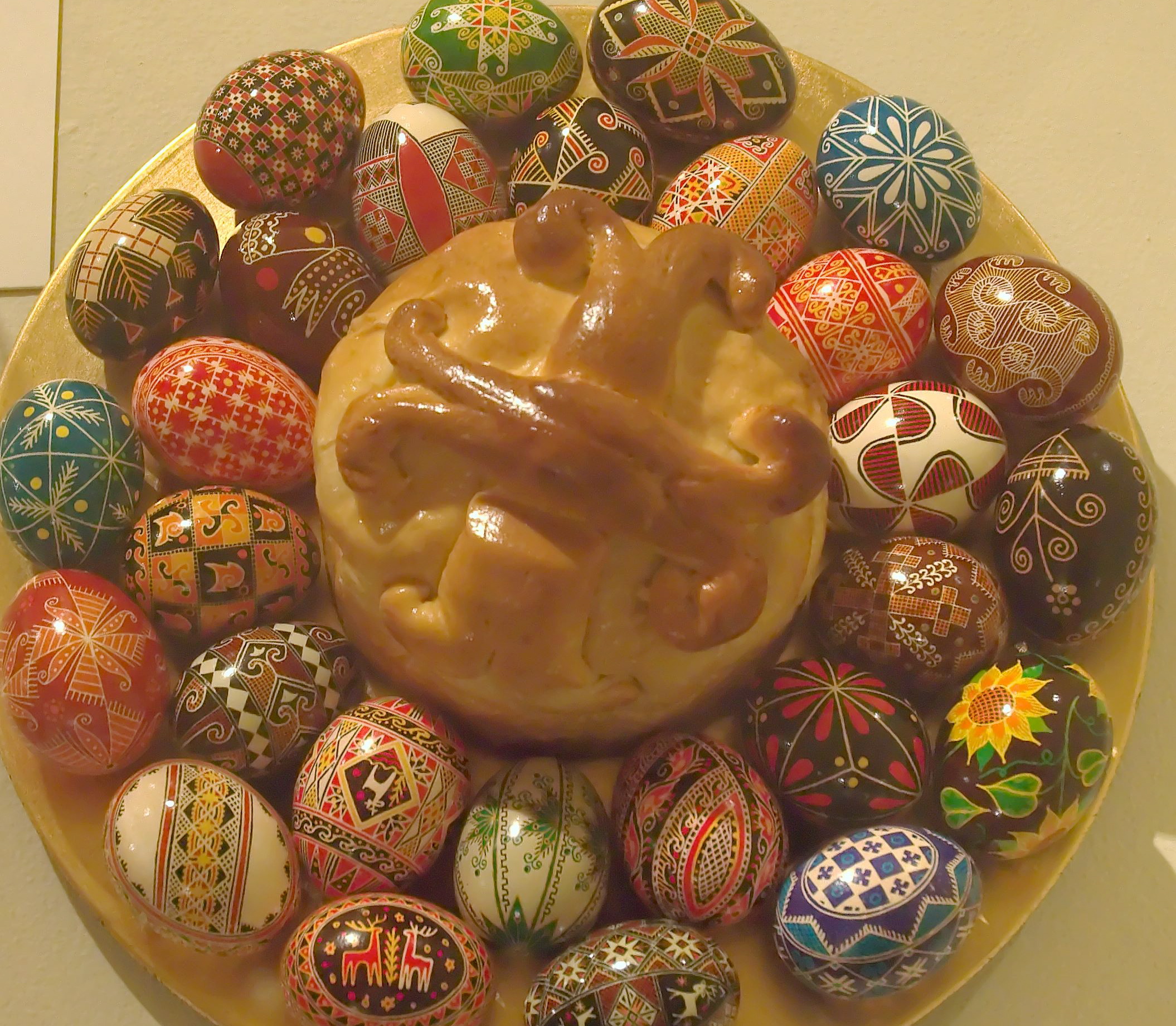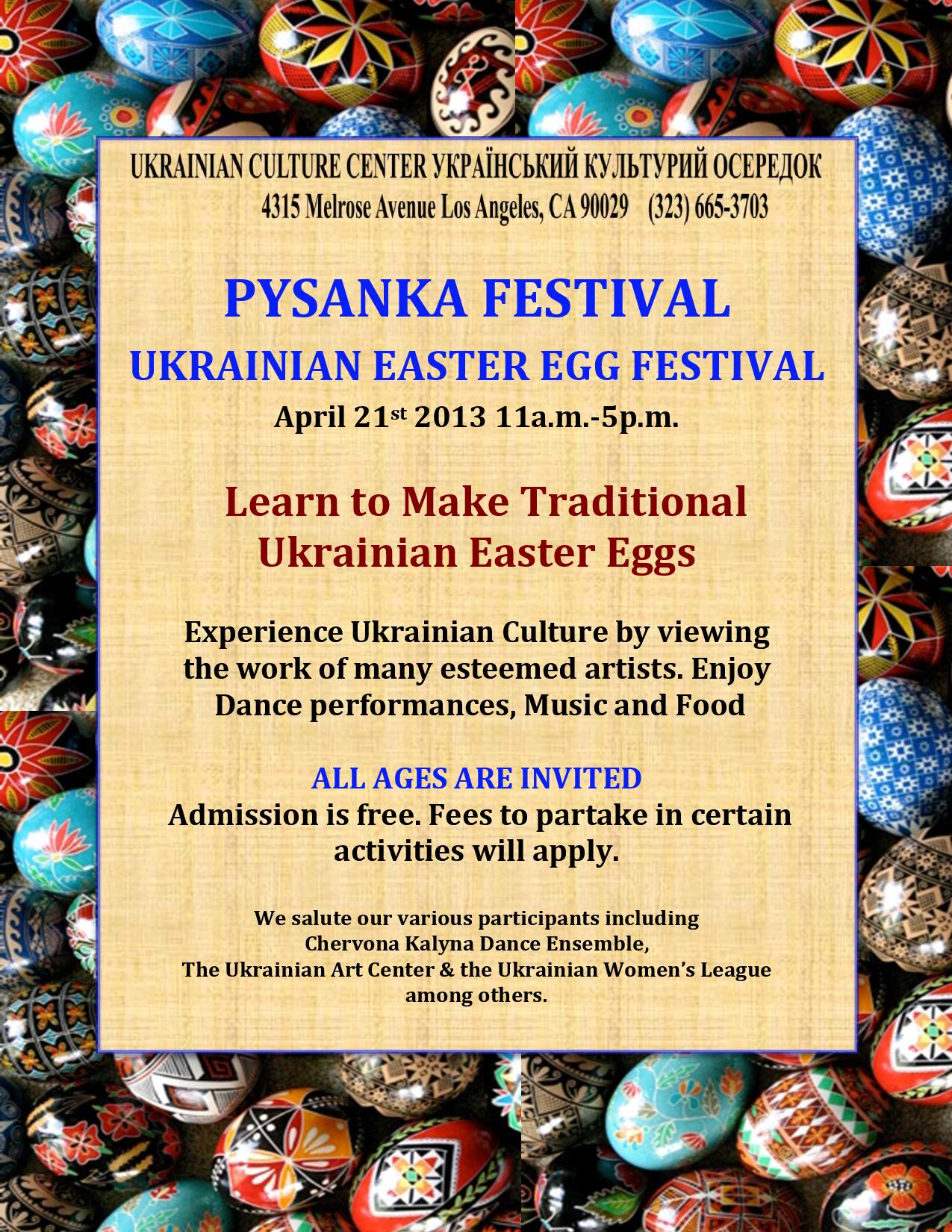A "pysanka" is a decorated Ukrainian Easter egg traditionally given to family members or respected outsiders at Easter.
On Sunday April 21, 2013, the Ukrainian Culture on Melrose Ave. invites all Los Angelinos, young and old, to come and learn to make this traditional folk art.
Professional egg writers such as Natalie Gebet will be one of several pysanka artists at the Ukrainian Culture Center from 11 am to 5 pm, holding workshops to teach the public how make the eggs.
The day-long open house event - which falls between Catholic Easter on March 31 and Eastern Orthodox Easter on May 5 - will also feature other Ukrainian artists showcasing their wares. The stage will have performances by Ukrainian dance ensemble Chervona Kalyna while a variety of different "varenyky" - otherwise known as "perogies" - will be served from the kitchen.
Gebet, who has been teaching Southern Californians in the art of pysanka making for over 20 years, sat down with the Huffington Post's Zorianna Kit to talk about the pysanka, how it's evolved over the years and why so many people are drawn to it.
Zorianna Kit: Why do you teach pysanka making?
NATALIE GEBET: I love sharing one of Ukraine's most beloved folk arts. That's what drives me to teach it. Plus, there is something about sitting quietly with a small group next to candle flames, talking and learning. You form a bond during the time of the workshop.
Q: Out of all the different types of art that's out there, why did a food group - the egg - become the chosen art form for Ukrainians?
GEBET: All cultures, going back far enough, have some form of veneration for the magic of the egg. It's a round inert object that brings life. The ancient people of Ukraine believed that there was magic in it. The yolk, so clearly round and yellow, symbolizes the sun, the giver of life. As Christianity was introduced to Ukraine, the symbolism converted to the Christian symbols. But it goes back to antiquity. We don't know when it began in Ukraine. It's a tradition that's been handed down over the centuries and millenia.
Q: Wow, that long?
GEBET: The belief in the power imbued in the egg motif and the symbolism that was placed on the eggs was so strong and so tied to the existence of the people in Ukraine, they never stopped doing it. The true pysanka is created with attention to the placement and the meanings of the symbols and the colors to imbue the egg with powers to please the givers of life. And to protect the home.

Q: So it wasn't for decoration?
GEBET: In ancient time the pysanka was put to work. The eggs were buried in the first furrow that was plowed in the spring. They were placed in the home to protect it and its inhabitants. They were placed in the barn with the hens so that the eggs would be fertile.
Q: Did the whole family make them?
GEBET: It was originally a woman's work. In the early days of spring, which is of course when the eggs were being laid, any free time that women had, this is what they did. Men had other folk art, like wood carving. But today, men make them and they do it beautifully. Before chemical dyes became available, people made their own using whatever colors they could get form the flora and the fauna of the regions. There are pysanka eggs that are typical to specific regions of Ukraine. Generations ago, someone could tell you where someone was from by the style and colors that she would use to make her pysanky ("pysanky" is plural for "pysanka").
Q: How do you make them today?
GEBET: I use traditional tools. There is the "kistka," which is a stylus that's handmade. It has a copper funnel attached. We use true beeswax and a source of heat which would be a candle, as has been used over the centuries. Today, we use aniline dyes. In the industrial revolution, chemical dyes became available. They're much more vibrant, so the eggs stand out more.

Q: Can anyone make a pysanka?
GEBET: Anyone can learn it without prior experience over a certain age. I use raw eggs, because that's the traditional way, but for beginners, I used emptied eggs. It's easier and people stress less. Learning how to create a pysanka should not be a stressful experience.
Q: Aren't emptied eggs more delicate?
GEBET: The good thing about using an emptied egg is that if should it fall and crack, it's still salvageable to take home and display the good side. If you use a raw egg and it falls, you're done. You can't really save it. So I use empty eggs, but I plug the hole so they can take the dye. I found that emptied eggs actually fall less often because people aren't as nervous. And when the egg does fall, it doesn't tend to shatter. It almost bounces. You'd think they they'd break because they're more fragile, but they don't hit the ground so hard. A full egg is heavy so when it hits the ground, it's over.
Q: How long does it take to make a pysanka?
GEBET: To make a simple egg, its about 2-3 hours. I teach a very simple design because you're working on a round surface.
Q: What type of people tend to come to you to learn this art form?
GEBET: There are three types of people that I find are drawn to want to try. First of all, all of them think they're beautiful to begin with. They've seen the eggs and are curious to try.
The first type is the artist - someone who has a creative streak and is interested in trying new things. The other is someone who is of full or part Ukrainian or of Slavic ancestry. The third one are adolescent boys. Actually they're more drawn to it when you use a raw egg. There's nothing like a raw egg and flame to draw in boys. They just think it's the coolest thing to be allowed to do!
Q: Why is sharing this folk art important?
GEBET: Learning about other cultures makes us understand each other better. And by sharing our cultures with people who are not of the same background, we're participating in our small way of peaceful world understanding. They pysanka is a very peaceful symbol. It's not a symbol of war or hate. It's a symbol of love, duty, family, appreciation of nature.

